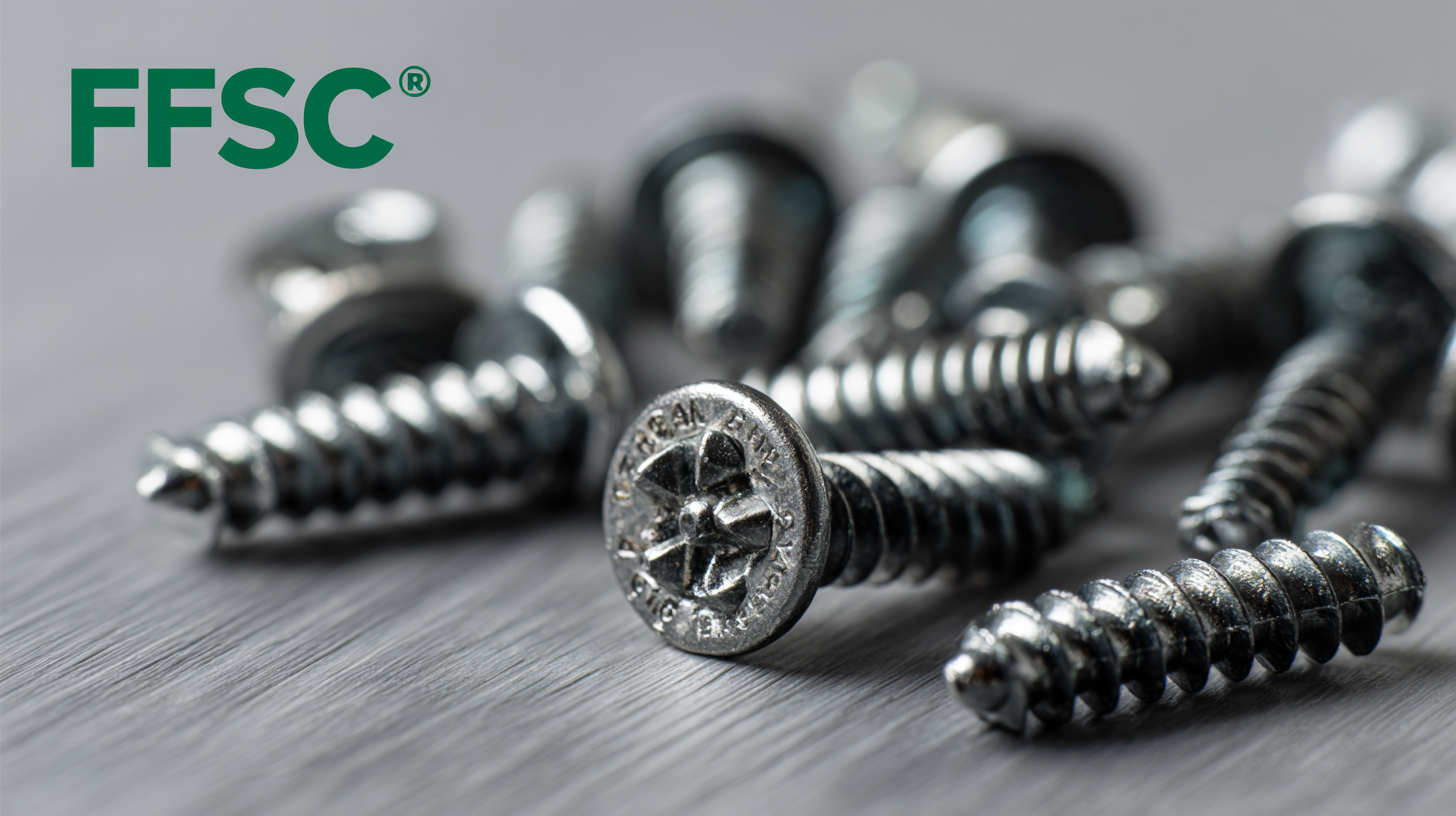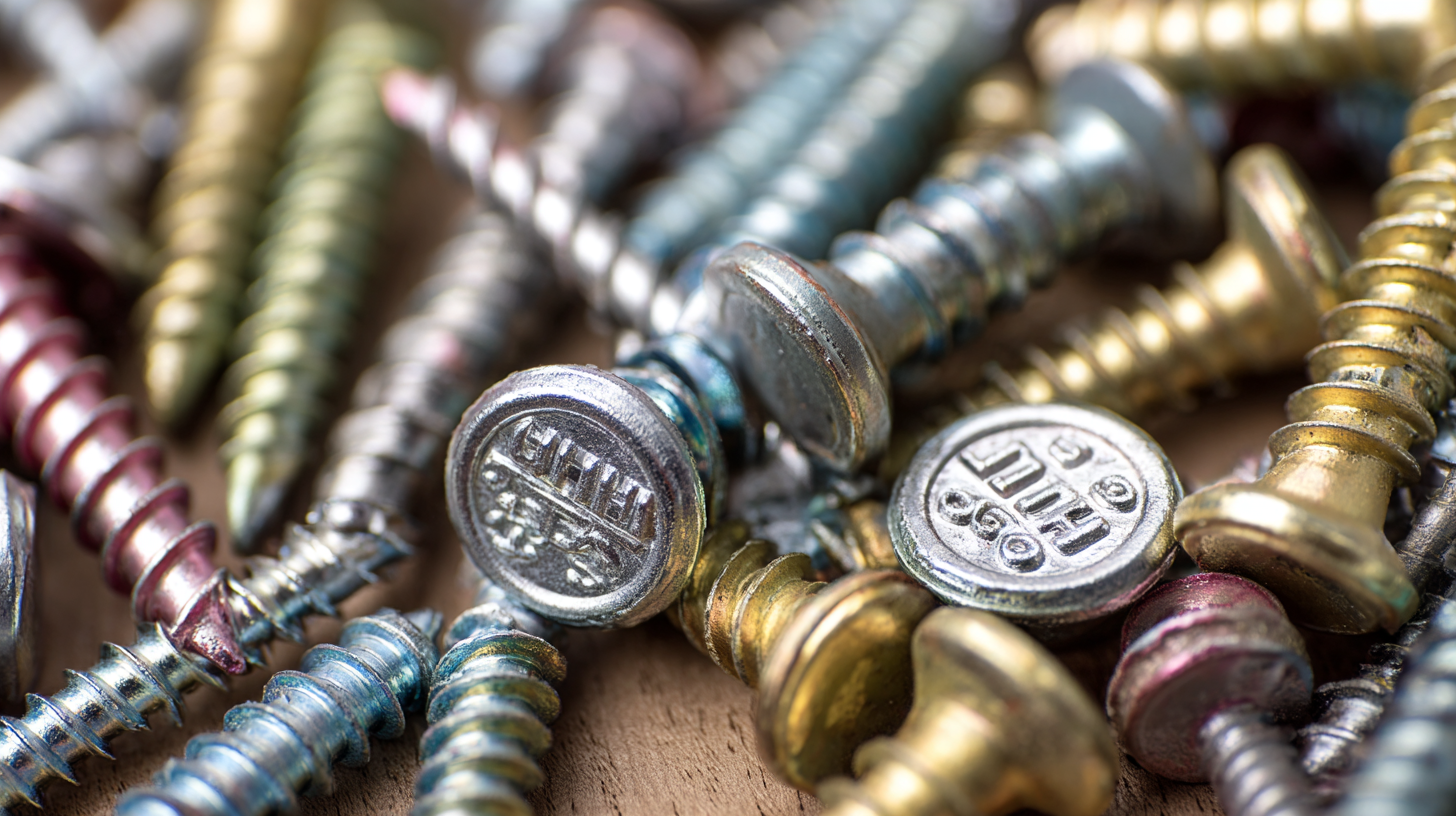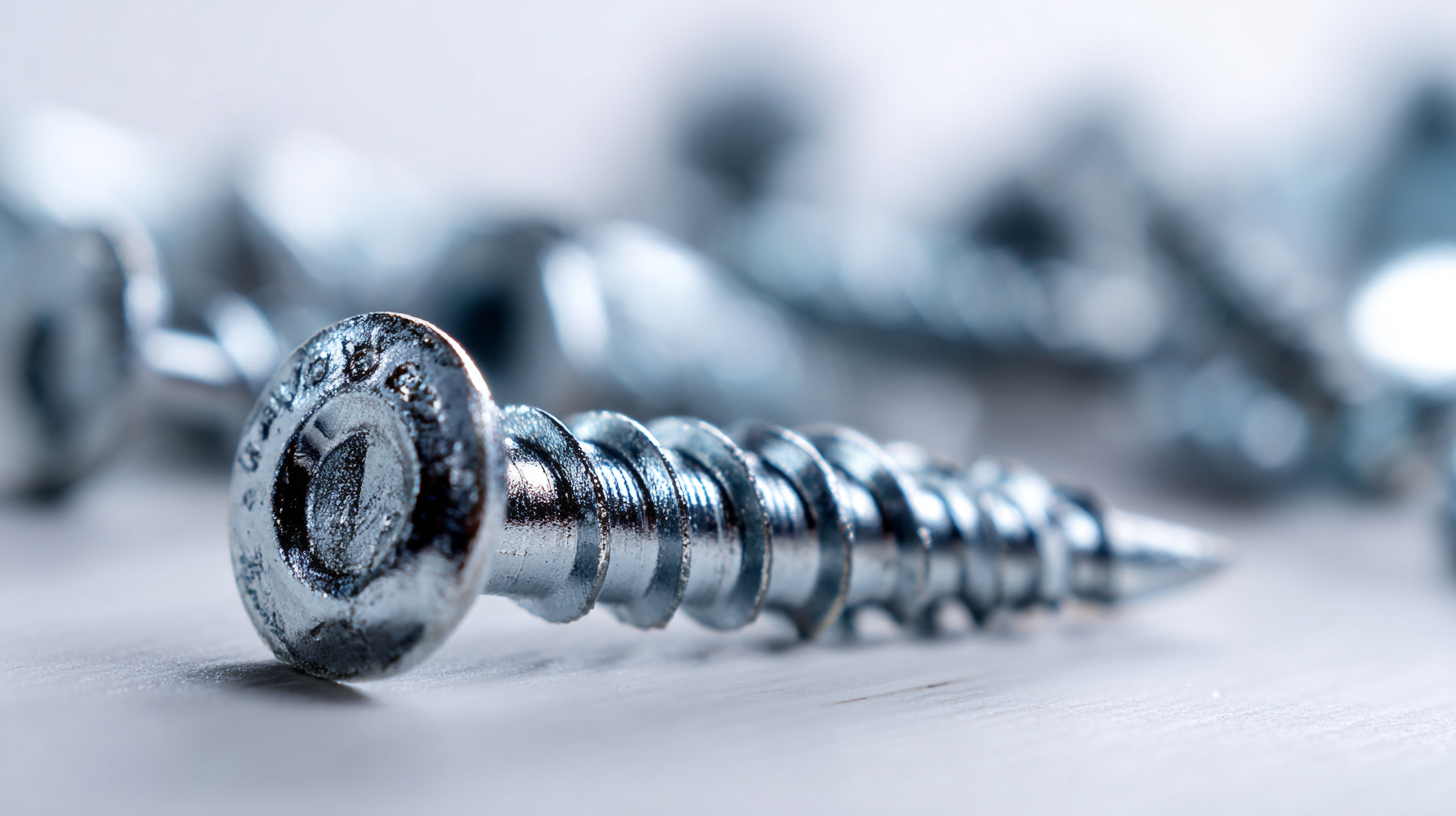
Future Insights on Best Self-Drilling Screws Market Trends and Strategies for 2025
The self-drilling screws market is poised for significant growth, driven by the increasing demand across various sectors such as construction, automotive, and manufacturing. According to a recent market report by Grand View Research, the global self-drilling screws market size was valued at approximately $1.2 billion in 2022 and is projected to expand at a compound annual growth rate (CAGR) of 6.5% from 2023 to 2030. As the construction industry increasingly embraces quicker and more efficient fastening solutions, self-drilling screws are becoming essential in applications requiring speed and reliability. This blog will explore the emerging trends and strategic insights shaping the self-drilling screws market in 2025, with a focus on innovations, sustainability, and competitive strategies that industry leaders are adopting to maintain market relevance in an ever-evolving landscape.

Emerging Trends in Self-Drilling Screws: What to Expect by 2025
The self-drilling screws market is witnessing significant shifts as we approach 2025, driven by emerging trends that shape the industry landscape. As construction and manufacturing sectors expand globally, the demand for efficient, versatile fastening solutions continues to grow. Innovations in materials and coatings are enhancing the performance and durability of self-drilling screws, addressing the need for sustainable practices. These advancements are not only improving resistance to corrosion and wear but are also aligning with eco-friendly initiatives that are becoming more prevalent in various industries.
Moreover, the evolving preferences of consumers, along with the increasing automation in manufacturing processes, are influencing the strategic approaches of market players. Companies are prioritizing research and development to provide tailored solutions that meet specific industry requirements. The integration of smart technology and improved manufacturing techniques is set to further streamline production and reduce costs, making high-quality self-drilling screws more accessible. As we look toward 2025, stakeholders should stay attuned to these emerging trends and adapt their strategies accordingly to maintain competitiveness in this dynamic market.

Cost-Efficiency and Maintenance Advantages of Self-Drilling Screws
Self-drilling screws have gained significant traction in various industries due to their remarkable cost-efficiency and maintenance advantages. These screws are designed with a sharp point that allows them to drill into materials such as wood, metal, and plastic without the need for pre-drilling. This feature not only saves valuable time during installation but also reduces labor costs, making them an attractive option for contractors and DIY enthusiasts alike. As manufacturers continue to innovate, the longevity and durability of these screws are expected to enhance, further solidifying their position in the market.
Moreover, the maintenance benefits associated with self-drilling screws cannot be overlooked. Their unique design minimizes the risk of stripping or breaking during installation, leading to fewer repairs and replacements over time. This added reliability contributes to reduced maintenance efforts, which is particularly advantageous in large-scale projects where downtime can be costly. As more industries recognize the advantages of self-drilling screws, the market is projected to expand significantly by 2025, driven by the demand for efficient and sustainable building solutions.
How Digital Innovations are Transforming the Self-Drilling Screw Industry
The self-drilling screw industry is on the verge of transformation, driven by rapid digital innovations that are streamlining manufacturing processes and enhancing product designs. According to a recent market research report, the global self-drilling screws market is projected to grow at a CAGR of 5.8% from 2023 to 2025, with digital technologies playing a pivotal role in this expansion. Advanced manufacturing techniques, such as 3D printing and automation, are enabling manufacturers to produce high-precision screws more efficiently, reducing lead times and costs.
One noteworthy trend is the rise of smart screws embedded with IoT sensors, providing real-time data on performance and structural integrity. This digital enhancement not only improves quality control but also allows for predictive maintenance, significantly lowering operational risks. As businesses increasingly adopt these technologies, they can better meet the evolving demands of sectors like construction and automotive, which are integral to the market growth.
Tip: Manufacturers should consider investing in smart technologies to remain competitive. Implementing IoT solutions can lead to better insights into product performance, ultimately aiding in design and manufacturing improvements. Additionally, partnering with tech firms specializing in digital transformations can facilitate smoother transitions into these innovative practices.

Tips for Selecting the Best Self-Drilling Screws for Your Projects
When embarking on a construction or DIY project, selecting the right self-drilling screws is crucial for ensuring structural integrity and ease of installation. One of the primary factors to consider is the screw's gauge and length. Thicker and longer screws can provide better holding power, but it's important to match them with the materials you're working with. For example, using a thicker screw might be beneficial for heavy-duty applications, while a lighter gauge may suffice for lighter materials.
Another key aspect to consider is the screw's coating and material. Self-drilling screws come in various finishes, such as zinc plating, which offers corrosion resistance, making them ideal for outdoor projects or areas susceptible to moisture. Additionally, the head type of the screw—whether it's pan, flat, or rounded—should align with the desired aesthetic and functionality of the project. By understanding these critical features, you can ensure that you select the best self-drilling screws suited to your specific needs, ultimately leading to a more successful and durable outcome for your endeavors.
Enhancing After-Sales Support: Building Customer Loyalty in the Screws Market
In the competitive landscape of the self-drilling screws market, enhancing after-sales support is crucial for building long-term customer loyalty. According to a report by Market Research Future, the global self-drilling screws market is projected to grow at a CAGR of 5.6% between 2022 and 2025. As manufacturers seek to capitalize on this growth, the focus on robust after-sales services cannot be overstated. Customers today expect not only quality products but also comprehensive support that addresses their post-purchase needs. This includes timely responses to inquiries, effective technical assistance, and proactive maintenance tips.
Investing in after-sales support also yields tangible benefits, with studies indicating that loyal customers are 60-70% more likely to purchase again. Implementing strategic initiatives, such as dedicated customer service teams and feedback mechanisms, can greatly enhance customer satisfaction. Furthermore, leveraging technology to provide real-time assistance through chatbots or personalized follow-ups can create a seamless experience, transforming a one-time buyer into a repeat customer. By prioritizing after-sales support, businesses in the self-drilling screws market can develop meaningful relationships with their customers, ultimately securing a competitive advantage going into 2025.
Future Trends in the Self-Drilling Screws Market (2025)
This chart illustrates the projected impact level of key trends influencing the self-drilling screws market by 2025. The focus is on enhancing customer loyalty through effective after-sales support, innovation, and quality assurance. Each trend's impact level is rated on a scale from 1 to 10.
